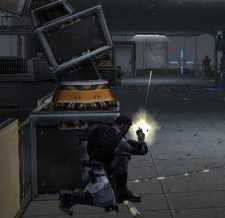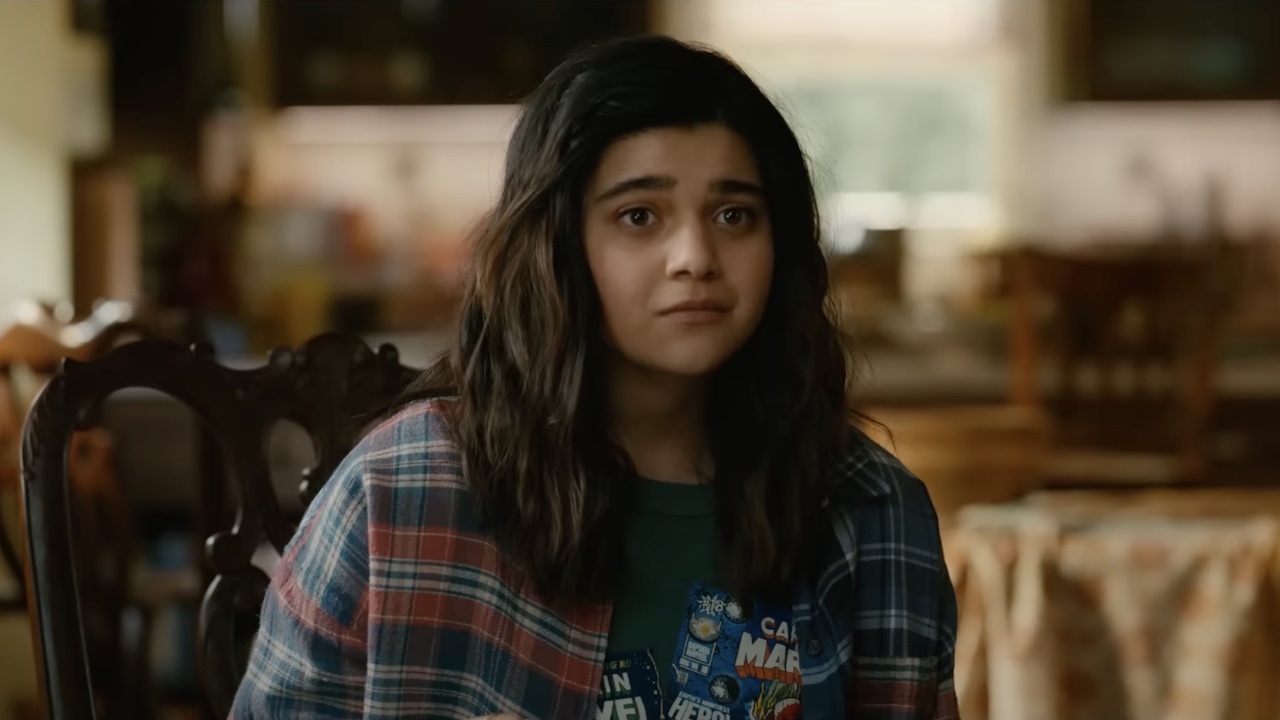
First-person shooters have come a long way since Wolfenstein 3D but with every mistake that's corrected, it seems like one or two equally frustrating flaws crop up. Swear to God this article isn't part of some nefarious scheme to trash the shooters exclusive to one console or another.
1. Cover System - New shooters proudly shows off their new cover system as if it's something to brag about. "Players can duck behind cover during firefights with a press of a button!", the game box proclaims. Yes, dodging gunfire manually was such an annoyance in old first-person shooters. I mean, c'mon, spending time and effort to avoid enemy fire? What do you think this is, some sort of game?
You should understand what you're getting with a cover system: long, Whack-a-Mole gunfights between players and enemies who pop out from behind waist-high rocks and crates to take potshots at each other. While the shooter genre seemed to be obsessed with World War II a few years ago, now it seems they've taken a liking to the drawn-out stalemate trench warfare of World War I. Luckily some games utilize destructible cover or bullet penetration so you can just blast your cowardly enemies with a spray of random bullets just like the good old days.
2. Two-weapon swap system - Somewhere along the way, developers decided that a super-soldier carrying nine weapons and killing an entire army by himself was unrealistic and needed to be fixed. The "carrying nine weapons" part, at least. Yes, Master Chief can plummet from space and hit the ground unharmed and his protective shields regenerate perpetually but he can carry less than a fifteen year old caddy.
It makes sense in some games that legitimately strive for realism but it's still not all that fun of a system. You end up just sitting there staring at a pile of weapons on the ground, wondering which one of your two firearms so you can grab a new weapon. The idea is that it'll make you think strategically - you'll pick up the shotgun if you think you're about to do a lot of close quarters combat. However, that takes about as much strategy as deciding what you should pack for a weekend getaway. "Boy, should I bring my swim trunks? The hotel has an indoor pool but do you think we'll have the time?" In fact, you're only really making decisions on one weapon slot because 90% of the time you're just going to keep the assault rifle because you've got an ass-ton of ammo for it and it can fit every situation.
Full-fledged inventory systems like in Deus Ex and S.T.A.L.K.E.R. get annoying because you have to keep track of smaller items like bandages and food in addition to weapons. However, inventory systems are much less tiresome because they lack the laughably unrealistic aspect of the "realistic" two-weapon swap system: the idea that a rocket launcher and a pistol are both equally hard to carry.
You could argue that this swap system is used for balancing multiplayer games by keeping players from accumulating a stockpile of weapons but is that really what unbalances things? The problem in multiplayer usually isn't that one person has nine guns but that they've got one stupidly good gun (P90, AWP, etc.).
CINEMABLEND NEWSLETTER
Your Daily Blend of Entertainment News
3. Lack of wacky weapons - Unless your game is completely devoted to realism, you need at least one off-the-wall weapon. Even if the game is set in modern times, can't you just throw in one experimental gun? Pretty please? More than one would be great too but most shooters are fixated on the usual suspects: submachine guns, assault rifles, shotguns, magnums, semi-automatic handguns, rocket launchers, etc. - and half the time they manage to fuck those up, too. At this point, I'll settle for only one original weapon.
The nineties had a lot of crappy Doom/Quake clones but at least developers were willing to gamble a bit and throw an alien weapon or two our way. What happened to all the shrink rays and nail guns? There's contemporary games with really fun, imaginative weapons (Half-Life 2's Gravity Gun, Gears of War's Hammer of Dawn) but Jesus, so many other games just feel like elaborate advertisements for the Heckler & Koch MP5.
4. "Puzzles" - Early first-person shooters involved a lot of searching for keys and levers to bypass locked doors. Many developers nowadays pride themselves on not using such cheap design tricks. But what's in their place? "Puzzles." Instead of just flipping a switch to open a door, you now tap a button to pull a chain to open it. Or you shoot a generator. Ah yes, much better.
The other lever substitutes are the physics puzzles - for example, picking up a cable and plugging it into a wall to start up an elevator. Then there's the ever-popular seesaw puzzles where you stack a bunch of boxes and crap on one end of a long board to create a ramp. Great guys, we're all really impressed by your physics engine. We'll drop by and hang out with you and Mr. Wizard later. Can't we just go kill stuff now? Enemy corpses hitting the floor have more than enough physics.
5. No more gore? - Back in 2002, Soldier of Fortune II came out with an engine called GHOUL 2.0. The engine was specifically geared toward showing blood and gore - characters had 36 different areas on their body where they could show damage when hit by gunfire or explosions. When that game arrived, I thought we were on the cusp of some sort of new Age of Gore then but apparently not. Shooters these days mostly just stick to small blood spray, if that. Just so I don't come off as a raving psycho, let me clarify: it's not that I enjoy watching a video game character's limbs fly off when I blast them with a shotgun, blood spurting to create a grisly, beautiful painting as the hapless henchman falls to the floor wailing - yeah, don't enjoy any of that. It's that I liked the idea of a game reacting to slight differences in the shots players make.
If you shoot an enemy in the foot, they should lose a bit of mobility; if shot in the hand, they should drop their gun. I'm giving general examples that already exist in a few games but I think things could get much more detailed than this. Shooting things is the central act in an FPS and the more detailed or tactical they can make that act, the better. Just aiming for head shots for more damage gets boring. Some shooters try to incorporate location-specific damage but it feels like a lot of other current games (particularly those with Unreal Engine 3) squander the opportunity by just making enemies into bags of hit points that fall over once they run out of health.
The inevitable response to this article is going to be "Hey, Game X makes all these mistakes and it's still awesome!" Well, that's the thing - games can make these mistakes but still be good enough to overcome them. It doesn't mean those same mistakes should end up in the sequels or in competitors' games, but here we are.
Staff Writer at CinemaBlend.
Watching Chloe Fineman Teach Drew Barrymore How To Do Her 'Sexy Walk' Is Hilarious, But I'm More Focused On Her Structured Minidress
Onyx Storm Is The Fastest Selling Adult Novel In 20 Years. So Why Don’t We Have Forward Momentum On The Screen Adaptation Yet?
Now That John Cena Is WWE Champion Again, Here Are 5 Title Matches I Want To See (And Who I Think Will Beat Him)










